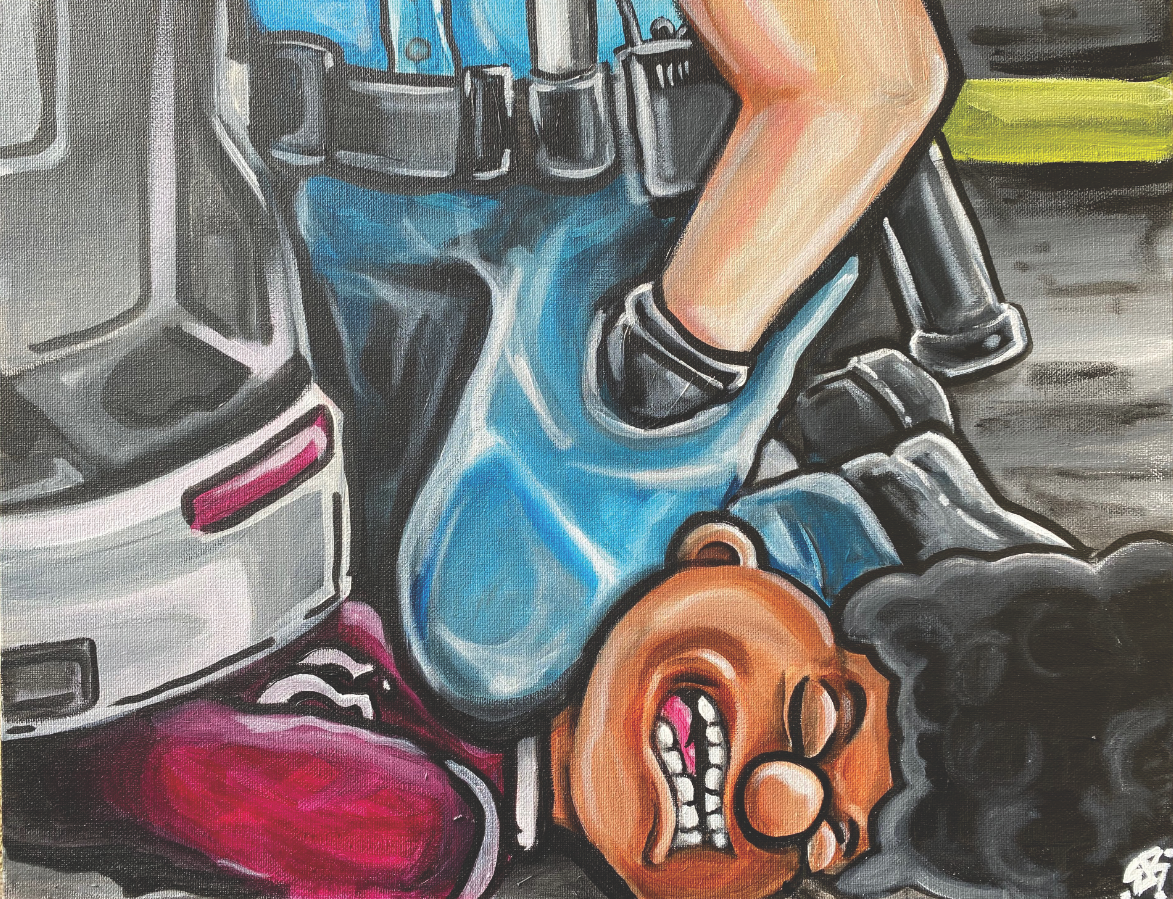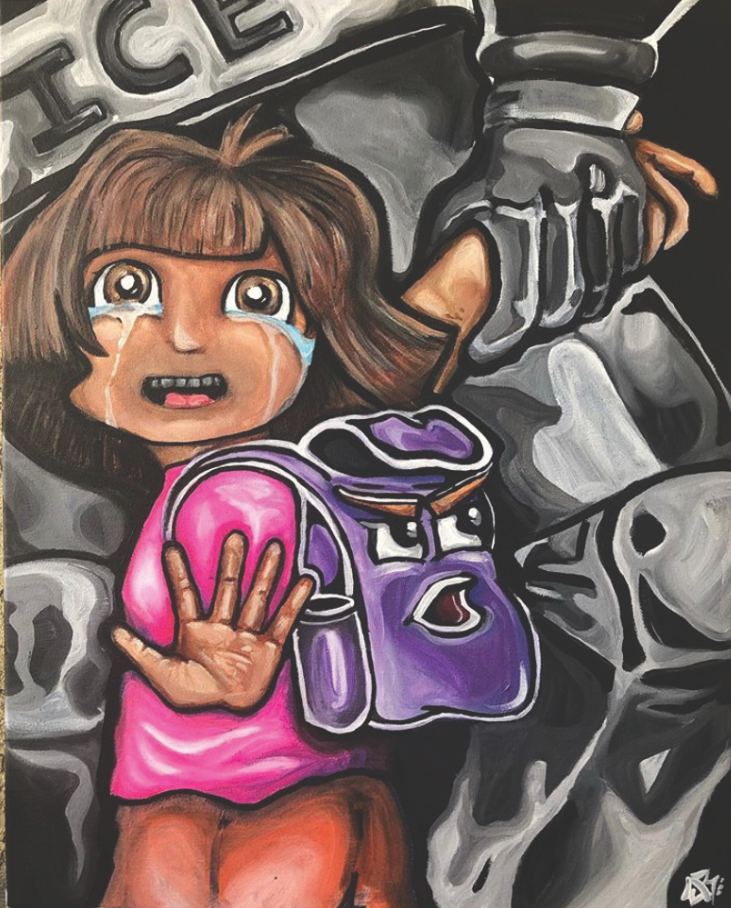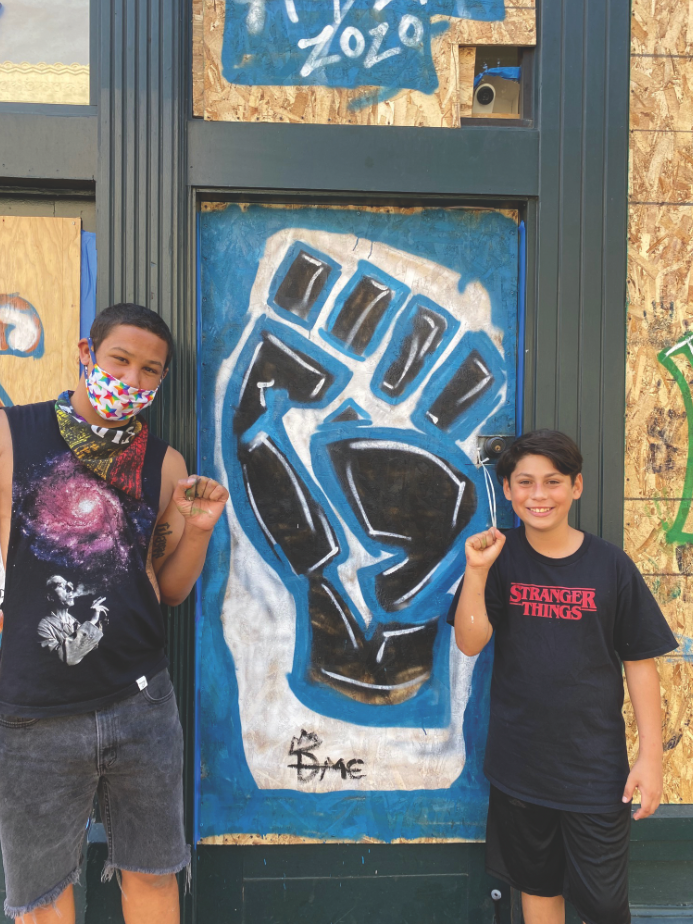
“Life’s most persistent and urgent question is, ‘What are you doing for others?’”
– Martin Luther King Jr., 1963
One fateful day, these words of the past reverberated in the forefront of my mind as a sigh of despair left my body. On May 25, the world collectively viewed a snuff video and watched as a grown man had his life pressed out of him by the force of a knee. Eight minutes and forty-six seconds in which a father, a friend, and son was humiliated and his existence extinguished. Another human stripped of life on this earth and added to an ever-growing list of Black people executed by police brutality; this one over a counterfeit bill. His name was George Floyd and he was merely one of the most recent catalysts in the movement about racial injustice.
Upon reviewing this terrifying ordeal, one typically begins to ask themselves the hard question, “What can I do?” Which I believe is a question many of us have struggled with over the past few weeks. I had to come to terms that I was unable to donate sums of money or even where to start if I could. With art being my passion, I decided to express myself in the best way I knew how — paint to canvas! Contrary to Oscar Wilde’s famous 1889 quote, “Life imitates art far more than art imitates life,” I believed there was a creative way to spread a message regarding these horrific events in attempts to do my part. I decided to imitate life! In a manic effort, overnight “Mama, I Can’t Breathe!” was created. On the morning of May 28, I released this piece and it spread faster than I ever could have expected. Typically I express my creativity with euphoric colors and fluid details but occasionally I will flip the “please everyone” narrative I have in my head and design a “think” piece that embodies the disparity of modern times in a nostalgic way.

*Nostalgia: A sentimental longing or wistful affection for the past, typically for a period or place with happy personal associations.
Everybody has a varied list of different experiences or things that take them to a place of joy. As a child, television was my best friend and I was utterly obsessed with Nickelodeon as most kids growing up in the ’90s were. There was one “Nicktoon” that stood above the rest due to the diversity of characters and storylines presented on the show “Hey Arnold!” This 25-minute feature presented inner city kids of all colors, sizes, class, and cultures going on mishap adventures through the fictional metropolis known as Hillside City. The show introduced us to Gerald Johansson, a witty and loveable Black character often disguised as the voice of reason to his best friend/main character Arnold. Gerald was an underrated realist with a prolific understanding of racial injustice at an early age. To sum it up, Gerald was “Woke AF.” You would commonly hear him say things to Arnold, who was shrouded in positivity, like “it’s real life. And in real life, you can’t always win,” or this pragmatic question: “Why do you always have to look on the bright side?” To which Arnold responds, “Somebody has to.” He was such a beloved character that you formed a true admiration and would never want to see him in a life-threatening situation. That being said, I reimagined Gerald Johannson with a knee upon his neck gasping for air in place of George Floyd. This was an extreme attempt to bring some perspective to those who vow to look away.

*Compassion: Sympathetic pity and concern for the sufferings or misfortunes of others.
Truth of the matter is, when a Person of Color dies at the hands of police, media sources often sensationalize any negative parts of the victim’s life while overlooking their possible path of redemption. They begin to paint the victim as someone who may have been difficult or in need of reform. Within days of his death, people began the defamation of Floyd’s character by digging into past tribulations. Character assassination typically follows suit in any situation like this as an attempt to not only make someone unrelatable but make the crime excusable. Media swiftly worked on changing the narrative — with one credible source even calling him a “bottom denominator” in her now-viral video. None of this should defend the actions of the officer or be a death sentence. The painting I made was a plea to understand the inhumanity placed on his neck that fateful evening and understand that even if you didn’t know Mr. Floyd, he was somebody’s Gerald. He was loved, he was human, but most of all, unlike Gerald, he was REAL.
After revealing this painting, as you would expect, I received some divisive messages and there I found my purpose in the movement. One young Caucasian woman went so far as to tell me the painting needed discretion and the “uncover photo” suggestion. She took it upon herself to tell me it’s a trigger for my fellow Black community and she should have the choice to scroll past. Therein lies the problem: people too often find it acceptable and easy to look away. Until it is forced upon someone and they face that demon called reality, can one truly be considered compassionate?

The biggest representation of gaining compassion through representation is the case of Emmett Till. A teenager (14) beaten and murdered beyond recognition in Mississippi only 65 years ago for whistling at a white woman (21). The men who lynched this young man obviously were acquitted but his mother decided to take matters into her own hands. She had an open casket funeral that presented his mutilated body to the world, sparking the next phase in the civil rights movement. The shock and disgust of what happened inherently made people face the disgusting truth of racial injustice. I was shocked to learn that the white woman admitted to lying about it on her death bed. George, much like Emmett, is just another spark in a fire that’s long been burning.
Dr. King’s words still ring true 57 years later in which he states it’s what we do for others in a time of turmoil that truly matters most. But if you are stuck in the question of “What can I do?” as I once was, there is a simple answer. Gain some more compassion. Take the time to understand human lives ARE being taken and that there is absolutely a racial divide in the country. Most of all, please for our sake, DON’T LOOK AWAY! That uncomfortable feeling pressing on your shoulders and sitting in your stomach…that’s called the truth and there are people who have to live with that feeling every day because God painted them a different shade.

With that being said, for one to say they “don’t see color” is not ideal. We must recognize that there are most definitely different colors in our nation but like some of the best paintings, it takes the representation of all colors to become a united masterpiece.
You can follow Eric on
FB: Erik Benson
Email: [email protected]
Instagram: erikbensonarts









